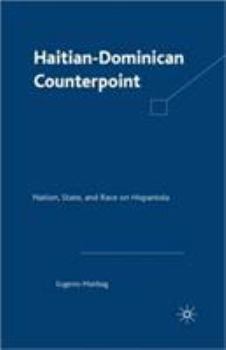Haitian-Dominican Counterpoint: Nation, State, and Race on Hispaniola
Select Format
Select Condition 
Book Overview
What would the island of Hispaniola look like if viewed as a loosely connected system? That is the question Haitian-Dominican Counterpointseeks to answer as it surveys the insular space shared by Haiti and the Dominican Republic throughout their parallel histories. For beneath the familiar tale of hostilities, the systemic perspective reveals a lesser-known, "unitarian" narrative of interdependencies and reciprocal influences shaping each country'sidentity. In view of the sociocultural and economic linkages connecting the two countries, their relations would have to resemble not so much acockfight (the conventional metaphor) as a serial and polyrhythmic counterpoint.
Format:Hardcover
Language:English
ISBN:0312294328
ISBN13:9780312294328
Release Date:May 2003
Publisher:Palgrave MacMillan
Length:269 Pages
Weight:0.94 lbs.
Dimensions:0.8" x 6.4" x 8.3"
Customer Reviews
1 rating
Excellent book--too bad it costs so much
Published by Thriftbooks.com User , 20 years ago
Dr. Matibag has written an excellent overview of the history of the Haitian-Dominican border. It helps dispel many of the myths held by either side such as the myth that the Massacre River was named after the massacre of Haitians in 1937 (the river was so named in 1728). The book is well-written and informative. Too bad that it is so expensive. My only complaint is that it needs to have maps showing where events took place and how the borders changed, but adding maps would probably have made it even more expensive.






